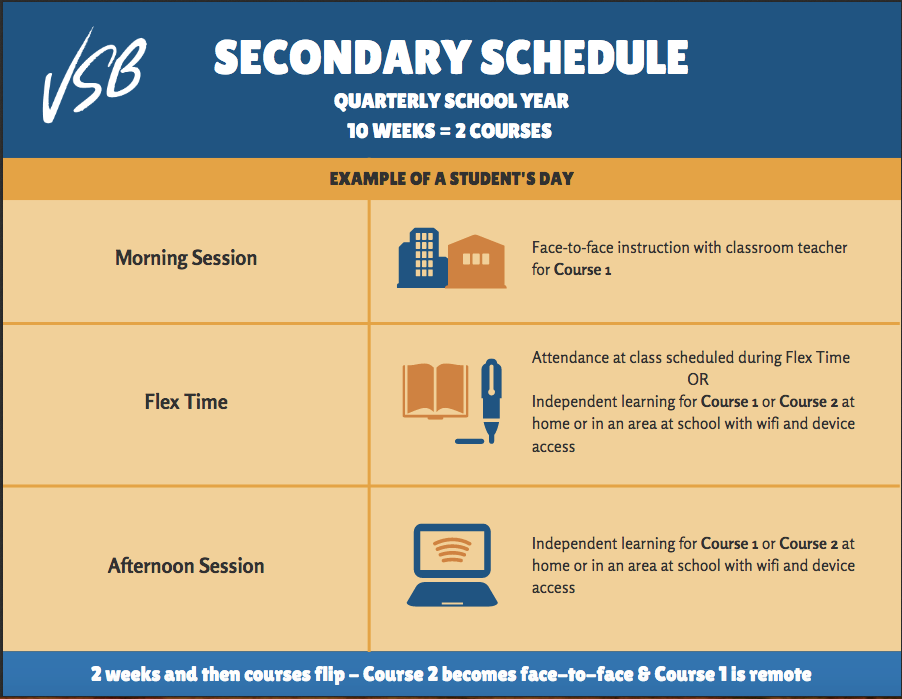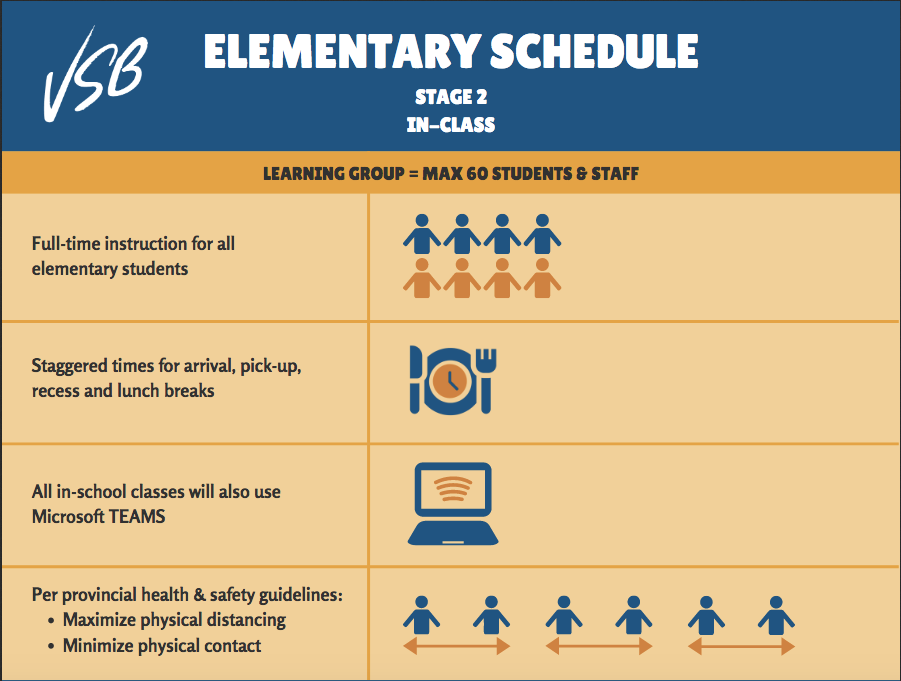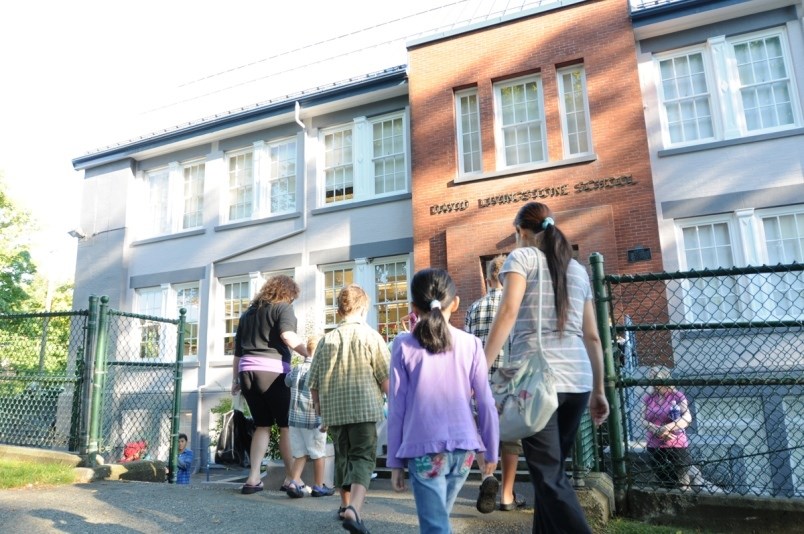Deputy superintendent David Nelson said the feedback from parents — particularly those with students in elementary school — is being shared with the Ministry of Education, which expects all districts to create a back-to-school plan that meets provincial health and safety guidelines.
Nelson said options of distance learning and home schooling exist for secondary school students but alternatives for elementary school students who don’t want to return to the classroom are still being discussed with the ministry.
“We’re well aware of it and hopeful we’ll have something we can share in the future,” Nelson told reporters in a briefing Wednesday.
In the meantime, school trustee Jennifer Reddy successfully moved a motion at a board meeting Wednesday night that requests the ministry provide “full funding and flexibility” to create a hybrid learning model for families who choose not to return their children to schools.
If the ministry doesn’t support this request, Reddy’s motion says the district would not penalize families and take placements away from students who remain at home during the pandemic.
At this point, the district’s back-to-school plan, which got board approval Wednesday, is a proposal and has to be approved by the ministry before the end of the month.
The plan calls for students to attend school every day in learning groups of no more than 60 — including staff — at elementary schools, and a maximum of 120 at high schools.

High school students will shift to a quarterly system and take two courses every 10 weeks, through a combination of in-class and remote learning.
“Flex time” will be available for students with diverse learning needs, those working on a yearbook or needing instruction related to International Baccalaureate and other unique programs.
Flex time will also be used for students who need to use a computer and want to access wifi, said associate superintendent Pedro da Silva, who noted that when the pandemic was declared in March, it became clear many families don’t have access to computers and wifi.
“What we’re asking schools to do in September is create designated spaces where students can have access to wifi and to technology,” he said.
“This would also keep students in school, if they’re not attending a session.”
High schools will not have common lunch breaks for students, but food programs for students who rely on bag lunches will remain in place, at least for September. High school students will not have access to lockers.
What will happen with on-call teachers and other staff that move around the district has not been finalized, although district staff suggested their movements would be limited to a hub of schools.
Parents of elementary school students will be contacted by their respective schools the week of Aug. 24 about what a return to the classroom looks like, but some can expect staggered times for arrival, pick-up and lunch breaks.
All elementary school students will use Microsoft Teams in the classroom, in case the district has to revert to online-only learning, if ordered by the Ministry of Health and Provincial Health Officer Dr. Bonnie Henry.

District staff emphasized to reporters the health and safety of students is paramount as Vancouver and 59 other districts in the province prepare for a year that will see more cleaning, hand-washing stations and protocols around physical distancing.
Masks will be provided to students and staff.
Asked how much of staff’s role will be spent monitoring guidelines and ensuring all present in a school adhere to health and safety measures, Nelson said:
“We’re an education system and the one thing we do well is educate. So we’ll be focusing on teaching and learning opportunities to have our students learn about their own health and safety, how to keep themselves safe. So really it will be less enforcement and more about encouragement and teaching.”
Access to schools will be limited to staff and students, although visitors can request an appointment through the school office. Traffic flow in common spaces will be managed with directional signs.
School windows will be open when possible and schools’ heating, ventilation and air conditioning systems will be set to increase the intake of outside air and to maximize air exchange in classrooms.
Parent Lisa Cay Miller, who attended a protest outside Health Minister Adrian Dix’s office last Thursday, has a son going into Grade 12 at a Vancouver school. Miller said the transmission of the coronavirus is too high in the community and the government’s plan is not safe.
“If adults between 20 and 29 are the primary source of transmission at the moment, and have been for the last few weeks, a big source of that is partying, which happens in the summer and which will happen on the September long weekend,” she said.
“So I would ask that they delay the start of school for at least two incubation periods past that long weekend so that we can really trace the community transmission. The best way to protect kids in the schools is to ensure that community transmission is low. We don’t have that right now.”
She favours an online option for her son, but said he is a teenager and will make his own choice. Miller suggested a hybrid model be in place where one group of students attends school the first half of a semester and a second group attends the second half.
“It’s not that hard to come up with more creative solutions than they have,” she added.
School trustee Estrellita Gonzalez has a child returning to school and told board members Wednesday she was confident in the district’s tailoring of the government’s back-to-school plan.
“I ask myself the question, ‘Would I feel comfortable sending my child to a VSB school?’, and based on what I’ve been hearing this week, my answer would be yes,” Gonzalez said.
“I’m hoping that many parents would take that to heart, that this is something that a lot of effort has gone into and many of our staff have worked endless hours on this, talked to other districts and with the ministry.”
The district’s plan expects daily self-health assessments for all staff and students. If a student or staff member is sick, they must stay at home. If someone becomes sick at school, they will be kept separate from others until they can be picked up or able to return home.
The district would then contact Vancouver Coastal Health, which would make decisions about contact tracing — if the illness is COVID-19 — and who and how many students and staff would need to be quarantined.
Asked what will be in place for students who have compromised immune systems, da Silva said the district has met with the district’s unions and principals and is confident the plan will adapt to those students’ needs.
Meanwhile, B.C. Teachers’ Federation president Teri Mooring said teachers still have concerns about the government’s plan.
The teachers’ union wants smaller class sizes to allow for physical distancing, more remote learning options and accommodations for teachers who are immunocompromised, or have chronic health conditions.
“Like every other worker in the province, teachers have a right to a safe workplace,” Mooring wrote Wednesday in a Twitter thread.
“The government’s K-12 restart plan still needs more work to ensure teachers, students and their families are as safe as they can be. We can get there, but we’re not there yet.”
The B.C. government has said that worldwide data has shown a very low infection rate in people 19 years old and under, and even lower in children under the age of 10.
The Ministry of Health reported 68 new COVID-19 cases Wednesday, bringing the total of active cases to 798 in B.C. Ten people are in hospital, with four in intensive care while the remainder are recovering at home.
So far, 198 people have died in B.C. of the disease.
@Howellings



